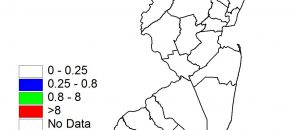Click to View | Download Report 7-5-16 Potato Disease Forecasting Report We will be tracking DSVs for Late blight development and calculating P-days for initiating the first early blight fungicide application. The first late blight fungicide application is recommended once 18 DSVs accumulate from green row. Green row typically occurs around the first week in May […]
Continue reading...Potato | Tomato Disease Forecast 7-1-16
Click to View | Download Report 7-1-16 Potato Disease Forecasting Report We will be tracking DSVs for Late blight development and calculating P-days for initiating the first early blight fungicide application. The first late blight fungicide application is recommended once 18 DSVs accumulate from green row. Green row typically occurs around the first week in May […]
Continue reading...Fruit IPM for 6-29-2016
Still time to treat for grape berry moth in grapes. Codling moth between generations with second flight about to start in apples. First spotted wing drosophila larvae found in untreated blueberry fruit. View the full update for 6-29-2016.
Continue reading...Vegetable Disease Briefs – 6/30/16
Basil downy mildew has been confirmed in southern and central New Jersey. Cucurbit downy mildew has been confirmed as far north as Maryland this week. Bacterial canker in tomato has been reported. Angular leaf spot of cucumber has been reported. Water-soaked lesions similar to cucurbit downy mildew appear on the bottom of the leaves at […]
Continue reading...Basil downy mildew confirmed in southern and central New Jersey – ALERT 6/30/16
Basil downy mildew has been confirmed on field-grown basil in southern and central New Jersey on 6/29/16. This is the first report of the pathogen in New Jersey and the mid-Atlantic region this growing season. All basil growers are encouraged to scout on a regular basis and initiate a protectant fungicide program if one hasn’t […]
Continue reading...Veg IPM Update: Week Ending 6/29/16

Sweet Corn European corn borer (ECB) moth catches remain very low now. The first flight is over, and growers are now managing subsequent infestations, which are generally lower than normal. Present adult activity is too low to generate a map image (<0.5 moths/night in all traps). Larval feeding ranges from single digits to above 20% in […]
Continue reading...